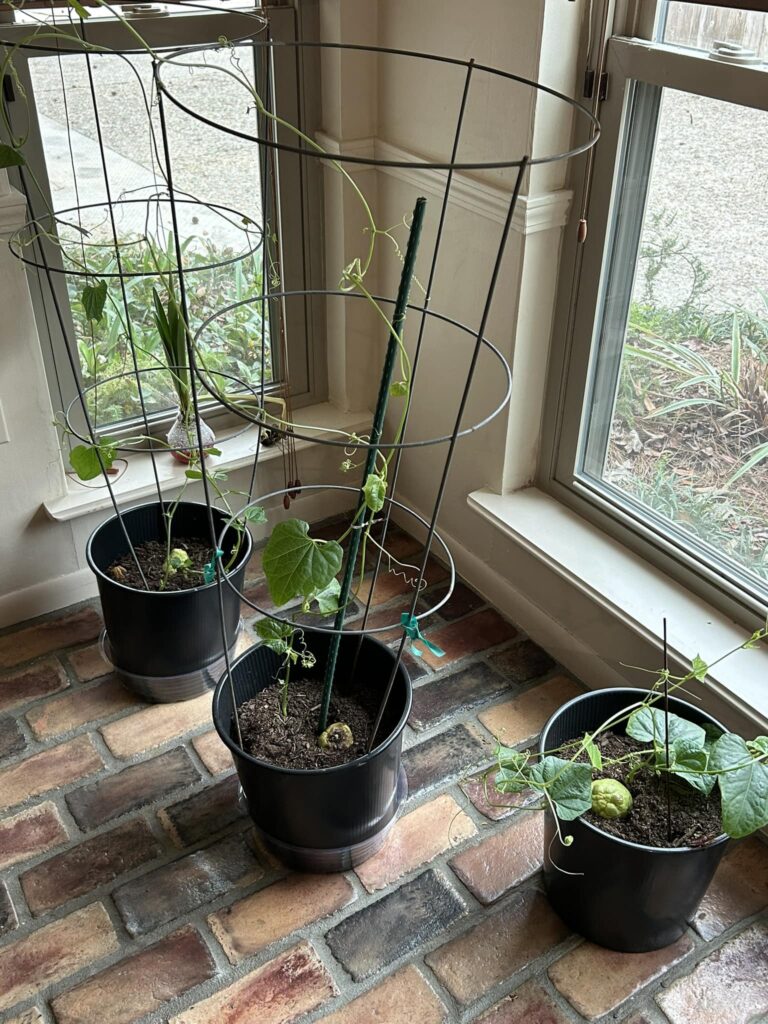How To Grow A New Mirliton Seed
1. If your mirliton has not sprouted, (fig. 1) place it horizontally in the warmest room of your house. At 75 degrees, the mirliton should begin to sprout in 2-6 weeks.

Fig. 1. Unsprouted mirlitons.
2. If your mirliton has already begun to sprout (tongue sticking out) (fig. 2), you are ready to overwinter it to help it develop a root ball.

Fig. 2. Sprout first emerges (above) and shoots extending (below). These are ready to plant.
 3. Over-wintering: Once your mirliton is sprouted, plant the whole fruit at a 45-degree angle about 2/3 of the way down with the sprouting end down in a 3-gallon container filled with good potting soil (fig. 3). Water thoroughly the first time. Mirlitons don’t need much water during the overwintering. Here’s how to use a bamboo skewer to test soil moisture. Or you lift the container slightly every few days to gauge if the soil is drying out, and only water if it is noticeably light. David Hubbell has an excellent video on overwintering a mirliton here.
3. Over-wintering: Once your mirliton is sprouted, plant the whole fruit at a 45-degree angle about 2/3 of the way down with the sprouting end down in a 3-gallon container filled with good potting soil (fig. 3). Water thoroughly the first time. Mirlitons don’t need much water during the overwintering. Here’s how to use a bamboo skewer to test soil moisture. Or you lift the container slightly every few days to gauge if the soil is drying out, and only water if it is noticeably light. David Hubbell has an excellent video on overwintering a mirliton here.

Fig. 3. Sprout planted “sprouting end down” at 45-degree angle with about 2/3 underground in a 3-gallon container.
4. Trellising: Construct a short trellis to support the vine as it grows. For the trellis, use either 24” tomato stakes with a yarn lattice or a small tomato cage (fig. 4). You can prune it back for months to keep it compact, and that won’t hurt the vine. The goal is to develop a good root ball.

5. Transplanting: When the possibility of a spring frost passes, you can transplant it into the ground. See Mirliton.Org for instructions on building a grow site and general procedures for watering, fertilization, shading, and plant pests and diseases. Click here for Mirliton.Org to find answers to all your Mirliton growing questions. Join the national mirliton gardeners Facebook Group and post questions and follow the progress of other Mirliton gardeners here.
Recent Comments